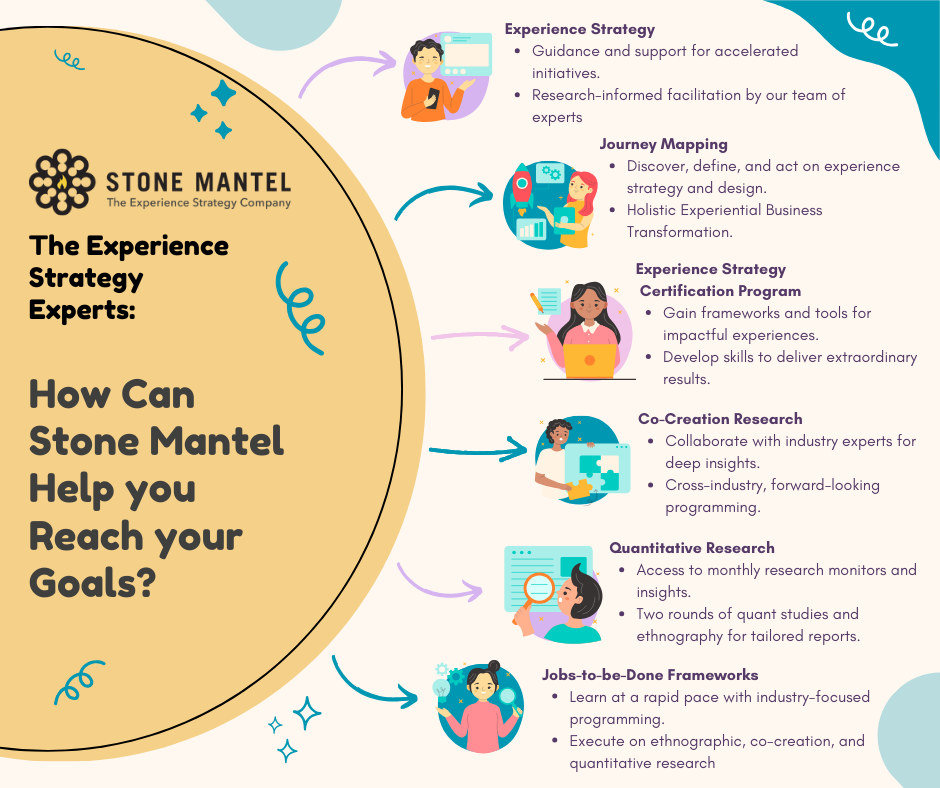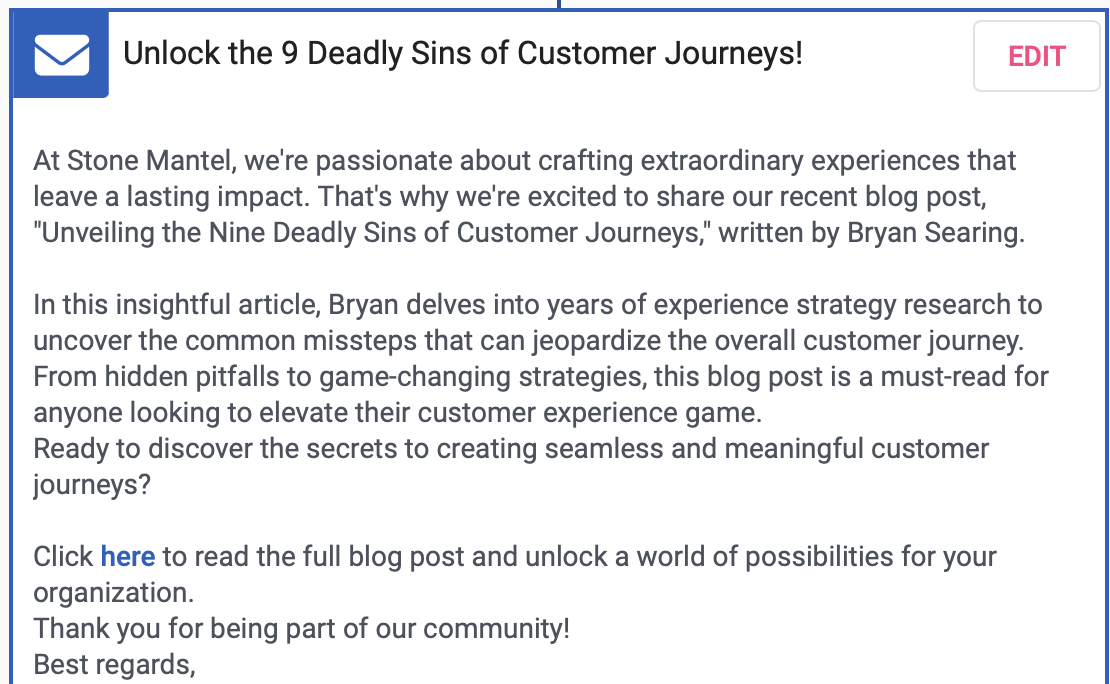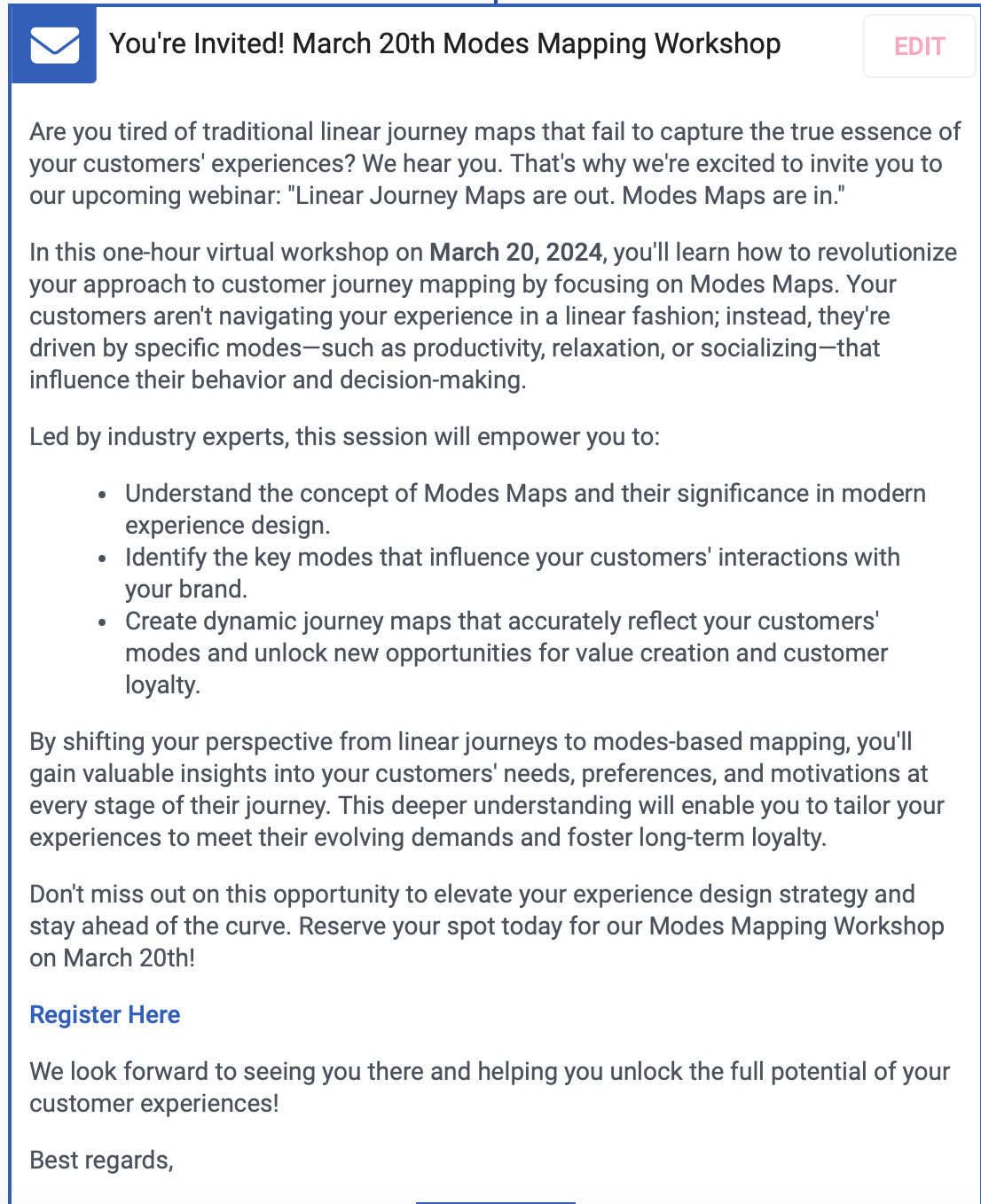Stone Mantel
Part 1: We broke down case studies to share online. We then created digital images to share the case studies on social media.






Part 2:
We created sales email templates for different customer personas and industries. We used these to advertise our services as well as upcoming events and educational online webinars.
We monitored the success of these emails and experiences a 75% increase in open rate, and 30% increase in click rate.
Some Examples are shown below
Part 3: Wrote articles about the work Stone Mantel did, explained some of the methods, and frewuently wrote artciles, blogs and other informational material. Example below:
Unlocking Success: The Importance of Journey Mapping in User Experience Design
In today's competitive business landscape, delivering exceptional user experiences is no longer just a nice-to-have—it's a necessity for sustainable success. One powerful tool that companies of all sizes should embrace is journey mapping. This user experience exercise not only helps businesses understand their customers' needs and pain points but also paves the way for creating memorable and meaningful interactions. Let's delve deeper into why journey mapping is a game-changer and why all companies should prioritize it in their UX design process.
Understanding the User's Perspective
At the heart of journey mapping lies the profound understanding of the user's perspective. By mapping out the user's journey—from initial awareness to post-purchase engagement—companies gain invaluable insights into the user's emotions, motivations, and challenges at each touchpoint. This deep dive allows businesses to empathize with their customers and tailor experiences that resonate on a human level.
Identifying Pain Points and Opportunities
One of the key benefits of journey mapping is its ability to uncover pain points along the user journey. Whether it's a cumbersome checkout process, confusing navigation, or lack of personalized support, identifying these pain points is the first step towards resolving them. Furthermore, journey mapping also reveals untapped opportunities for improvement and innovation. By analyzing user interactions and feedback, companies can identify areas where they can delight customers and differentiate themselves from competitors.
Enhancing Cross-Functional Collaboration
Journey mapping is a collaborative exercise that involves stakeholders from various departments, including marketing, product development, customer support, and design. This cross-functional collaboration fosters a holistic understanding of the customer journey and ensures alignment across teams. As a result, companies can break down silos, streamline processes, and deliver cohesive experiences that meet and exceed user expectations.
Driving Customer-Centric Design
In today's customer-centric era, businesses that prioritize user experience are the ones that thrive. Journey mapping serves as a compass for customer-centric design by placing the user's needs and goals at the forefront of decision-making. By aligning business objectives with user insights gained through journey mapping, companies can create seamless, intuitive, and delightful experiences that build trust, loyalty, and advocacy.
Iterating for Continuous Improvement
The beauty of journey mapping is its iterative nature. It's not a one-time exercise but an ongoing process of learning, iterating, and optimizing. By regularly revisiting and refining journey maps based on user feedback, analytics, and market trends, companies can stay agile and responsive to evolving customer needs. This continuous improvement cycle ensures that the user experience remains relevant, engaging, and impactful over time.
Embracing the Future of User Experience
Journey mapping is not just a UX exercise—it's a strategic imperative for businesses looking to thrive in today's experience-driven economy. By understanding the user's perspective, identifying pain points and opportunities, fostering cross-functional collaboration, driving customer-centric design, and embracing continuous improvement, companies can unlock the full potential of their user experiences and create lasting connections with their audience.
As you embark on your journey mapping endeavors, remember that the key to success lies in empathy, agility, and a relentless focus on delivering value to your users. By putting the user at the center of everything you do, you'll not only differentiate your brand but also create experiences that leave a lasting impact and drive sustainable growth.
Are you ready to elevate your user experience through journey mapping? Let's embark on this transformative journey together and unlock new possibilities for your business.


